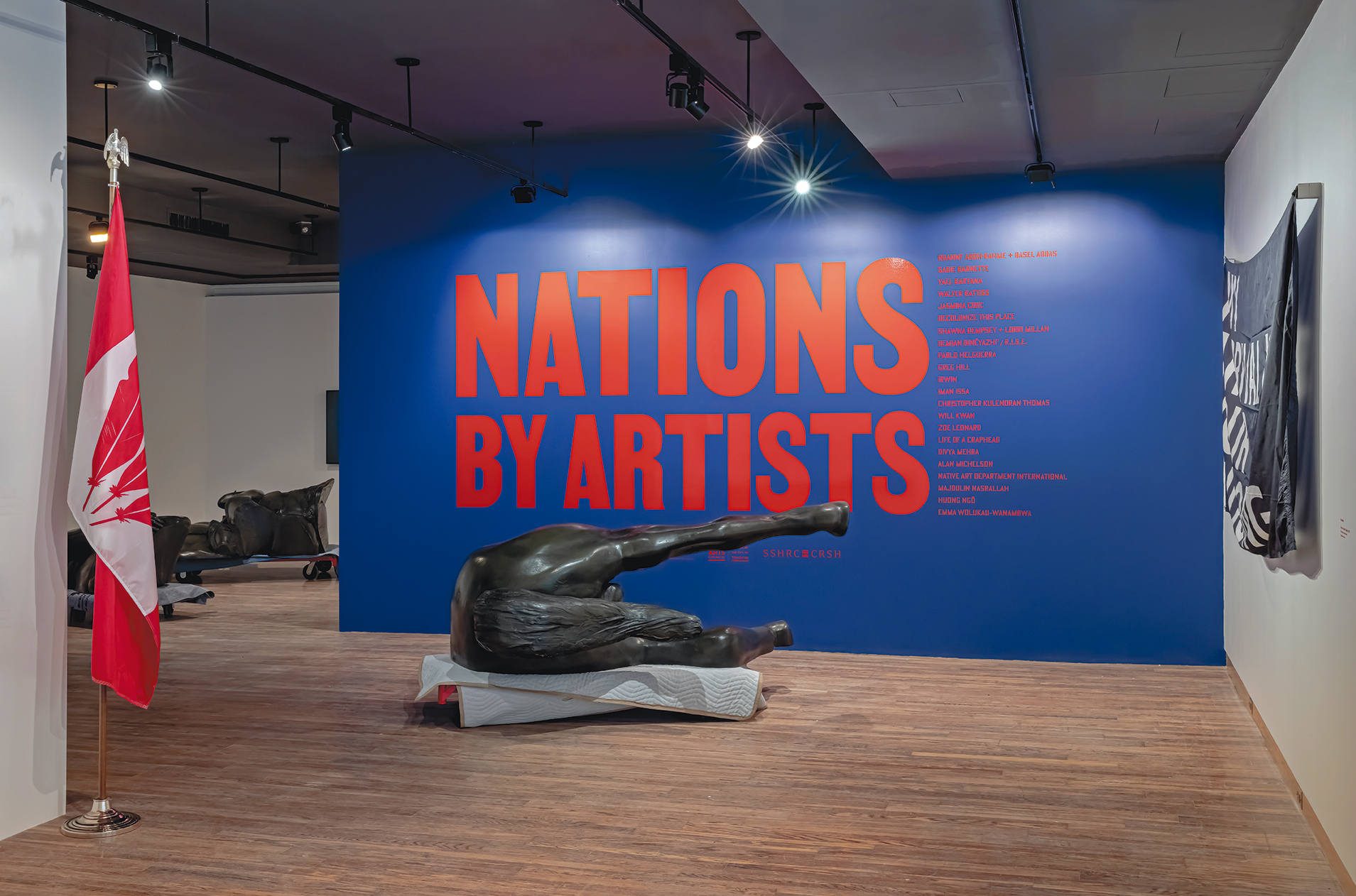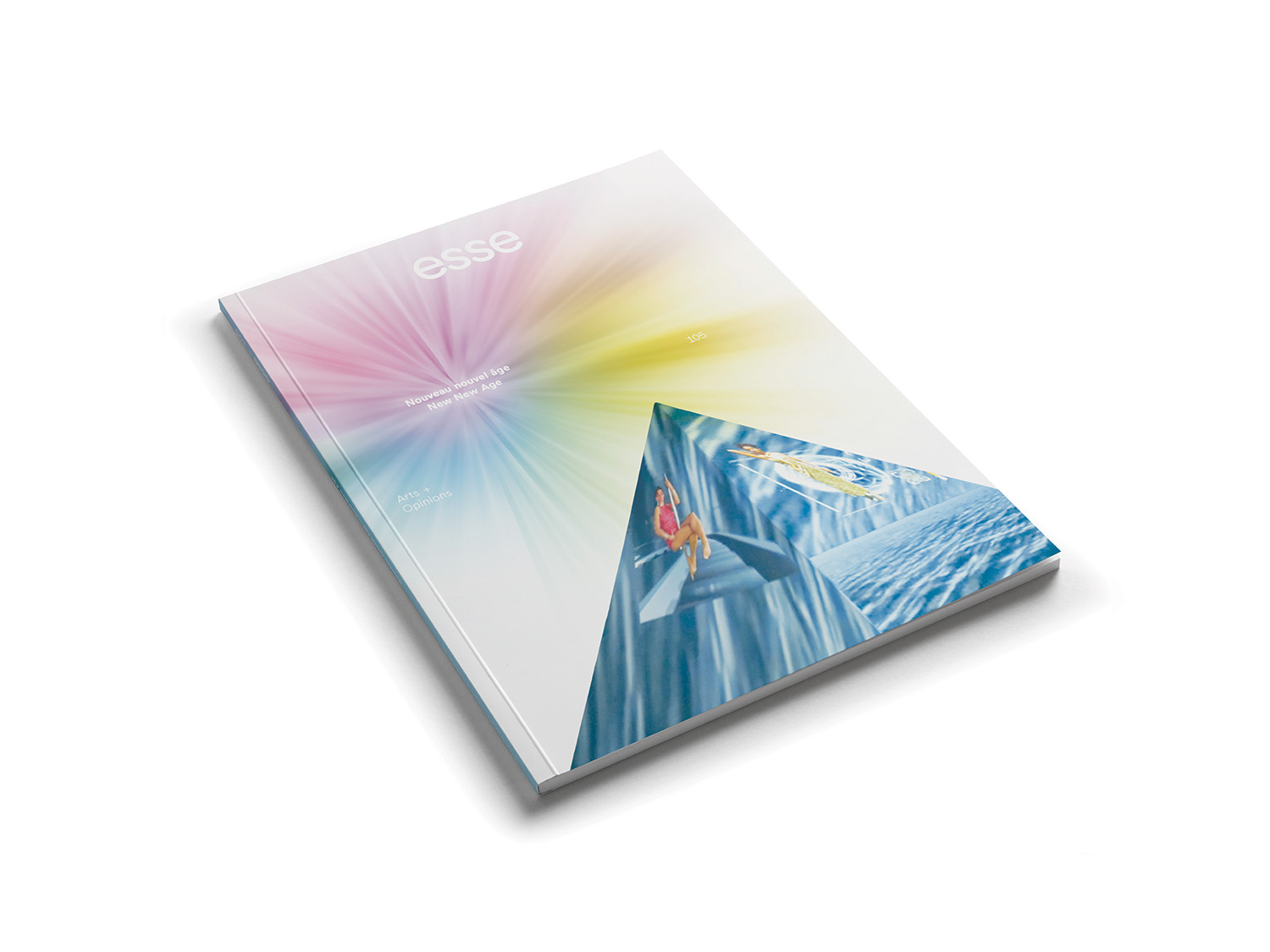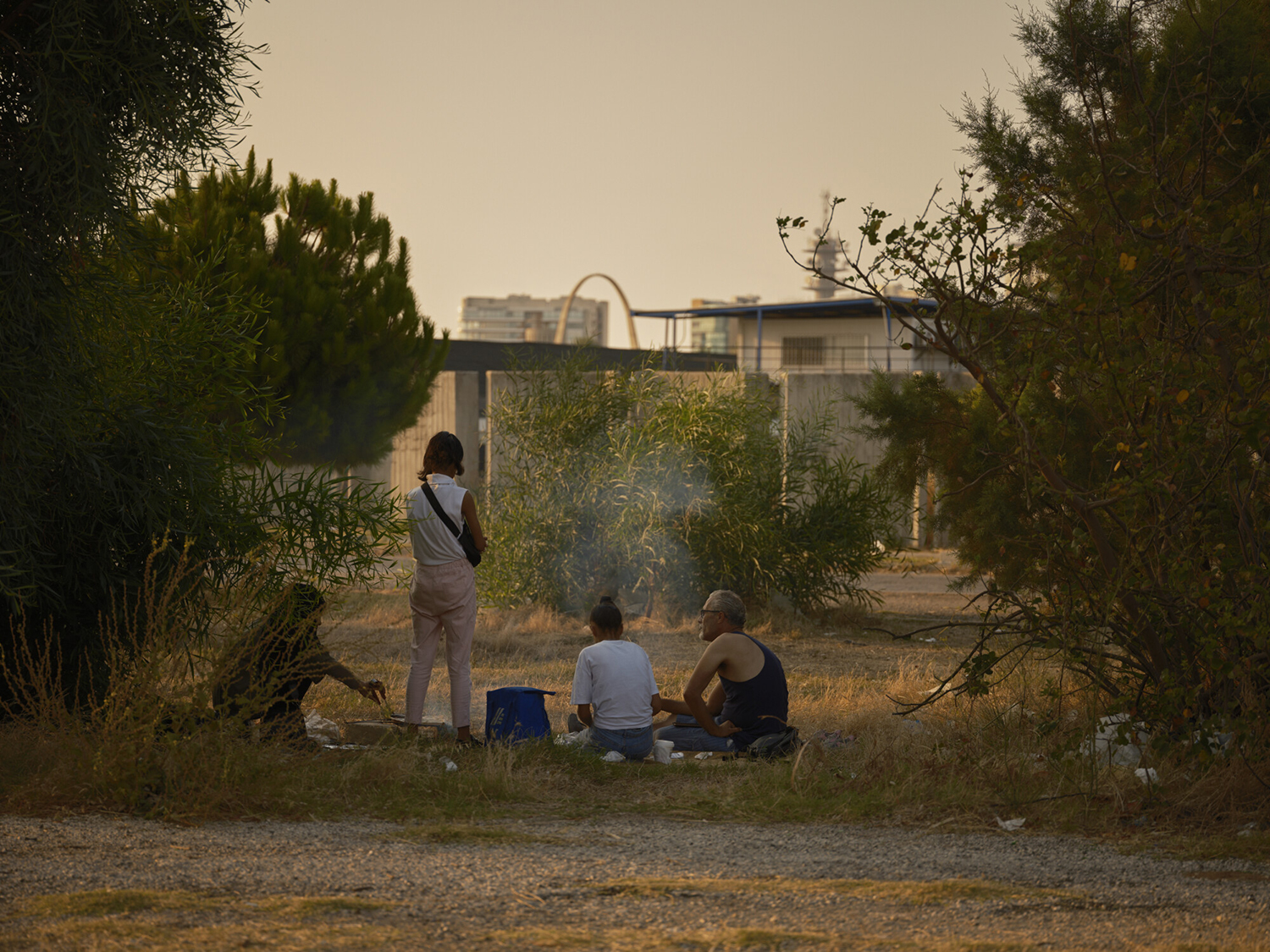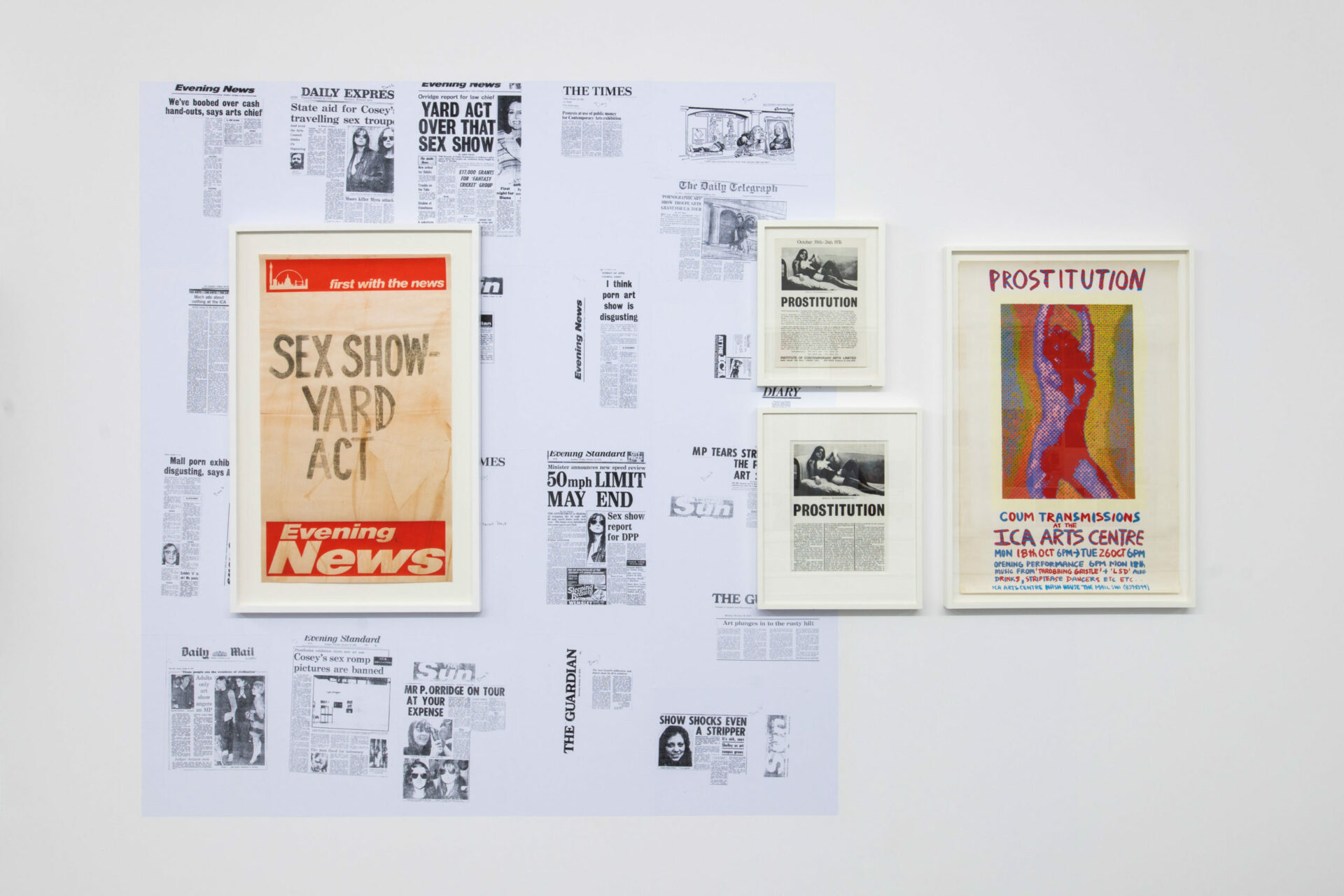
Photo : Toni Hafkenscheid, courtesy of the Art Museum at the University of Toronto.
February 8 — April 2, 2022
[En anglais]
The Art Museum’s expansive and well-timed exhibition Nations by Artists, curated by Mikinaak Migwans and Sarah Robayo Sheridan, opens with Greg A. Hill’s Kanata Project (started in 2000), an ongoing work that redesigns Canada’s national symbols in order to “recognize and honour the Indigenous origins of this country.” Using the Iroquoian word Kanata and pairing it with a three-feather insignia, Hill presents a series of official-looking T-shirts, flags, banners, and stickers that challenge the fixity of national symbols, defying their intended meanings and logics.
This welcome is both an introduction and provocation to engage with the concept and failings of the nation-state; it is joined by a series of insistent and subversive works by artists who dare to resist or reimagine what a nation-state is and can be. Instead of simply critiquing nationalism, the exhibition includes videos, installations, textiles, drawings, and images that offer counter-realities and -futures, seeking to redefine the very possibilities that these political structures so often deny. The exhibition webpage explains that the title draws from “Art Metropole’s landmark publishing series that explored the potentialities of artist-led culture.” Throughout the exhibition, suggestive pairings and conceptual associations make for a compelling viewing experience, as already substantive individual artworks are made even more so by the dialogue facilitated through their proximity to neighbouring conversations and considerations. At the far end of the exhibition, for example, a selection from Walter Battiss’s Fook Island (1972−79), a project consisting of ephemera, drawings, correspondence, and various other materials, is positioned alongside the Slovenian collective IRWIN’s An Apology for Modernity: The NSK State in Time pavilion at the 57th Venice Biennial (2017). While the fictional Fook Island is made legible through Battiss’s intricately hand-drawn currency, stamps, and maps, IRWIN’s trampoline installation, with accompanying publications and videos, references previous interventions involving temporary embassies and a passport office. Both projects envisage counter-possibilities in response to conditions of oppression and conflict in South Africa and Europe, respectively. Their distinctive yet overlapping strategies of reconstructing authoritative documents and credentials link these works as they contend with reimagining new world orders. Elsewhere, projects such as Sadie Barnette’s Untitled (Dad, 1966 and 1968) (2016) take on the nation-state at the level of individual citizens. Barnette’s installation brings together two large-scale photographs of her father in two very different uniforms — military on the left and Black Panther Party on the right — set against a wallpaper of bureaucratic stamps, including the monikers “Confidential” and “RACIAL INT SECT.” The work references the FBI’s five-hundred-page file on Barnette’s father, outlining routine surveillance and harassment, kept during his time organizing with the Black Panthers. Barnette reclaims this material, gesturing toward family histories affected by repressive state forces and the personal refusals offered in their wake. As a whole, Nations by Artists thoughtfully moves through humour, parody, protest, critique, and the deeply personal to arrive at social and political realities and imaginaries that bring us closer to sites of possibility and repair. Even in the works more concerned with holding to account than with dreaming new promises into being, there is still perhaps a sense of hopefulness shared through these acts of witnessing, reclaiming, and refusing — a kind of optimism that something else is possible.
Créez-vous un compte gratuit ou connectez-vous pour lire la rubrique complète !
Mon Compte



